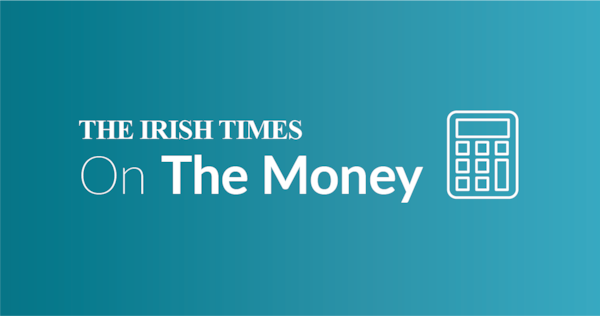I’ve been reading your recent articles in The Irish Times about auto-enrolment and I see that you say anyone without a private pension will be auto-enrolled.
As I work for four individual sole traders and none of them have ever offered any benefits such as pension, health insurance etc, I have had to do these things for myself and several years ago started a small private pension.
Does this mean that despite the auto-enrolment scheme now coming into place, my employers still have no obligation to contribute? Or is there some way for me to become auto-enrolled despite having this other small pension? I did have previous company pensions but no employer contribution for the last 9.5 years.
Ms O.H.
On the Money: the personal finance newsletter from The Irish Times
The cost of Christmas 2025: Why this will be one of the most expensive festive seasons yet
‘I think life is too short not to spend your money; I mean, you can’t take it with you’
Why Budget 2026 was a huge let-down for business owners on their pensions
You are very much the template for the modern worker, someone who can move jobs over the course of their career or who operates as a portfolio worker, working for a number of different employers at the same time.
Auto-enrolment does look to accommodate people in that position. Its ground rules set down a €20,000 salary threshold which operates across all employments, as long as you are aged between 23 and 60. Employers cannot dodge their commitment simply because you do not earn €20,000 with each of them.
And that €20,000 is the gross salary figure as listed in payroll, something we will return to in a minute, not your take-home pay. Gross salary would include things like overtime, bonuses alongside actual salary for the job and any other employment income which is subject to income tax.
But what about your private pension?
The coverage on auto-enrolment has stated regularly that people who are already members of occupational schemes or who have a private pension will not be enrolled. So does that mean you will be excluded from this system? You say you have a private pension fund into which you have invested for the past several years.
[ What is the auto-enrolment pension scheme and what does it mean for you?Opens in new window ]
No, you won’t. Why so?
The key thing here is how the National Automatic Enrolment Retirement Savings Authority (Naersa), the body set up by the Department of Social Protection to run auto-enrolment, will operate.
It will determine who does and does not get enrolled on the basis of the payroll data submitted by employers. And, in the base of people like you, it will be able to identify your multiple employers by cross-checking that payroll data with your PPS number.
When it does this in your case, it will see that none of your current employers is making any deduction from payroll into a pension scheme, so it will sign you up to the My Future Fund auto-enrolment scheme.
It has no sight of anything you are paying into a pension from your net salary, nor does it care. And the fact that you are entitled to, and presumably claiming in your annual return, tax relief on the money you are putting into your private pension is of no interest to it either.
But what about those legacy occupational schemes from some former employments?
What happens if you move jobs to someone offering an occupational scheme to which you sign up and where contributions are taken through payroll, as is standard?
Again, payroll is the issue. There are likely tens of thousands of people out there who may, at one time or another, have worked for a company that did offer an occupational pension scheme, or access to a pension. So they will have pension savings of some sort.
But there are no current deductions being made from payroll into any of those schemes in your case. And if there is nothing on the payroll data Naersa will be getting, there is nothing to stop them going ahead and auto-enrolling you.
And that’s good, because, at the moment, your employers are getting off scot free. They have been required for several years to at least offer you access to a pension scheme if they do not operate a scheme themselves. They clearly have not done so.
From January, you will be signed up to the My Future Fund and each of your employers will have to contribute a sum equal to 1.5 per cent of your gross salary into the fund. You will also have 1.5 per cent deducted from your take-home pay with each employer and the State will contribute €1 for every €3 you put in.
Those figures will rise over the next decade, to 3 per cent from the start of 2029, 4.5 per cent from the start of 2032 and to 6 per cent from the start of 2036. At that point, a healthy 14 per cent of your gross earnings will be going into your pension fund each year.
And, of course, you have both your legacy pension funds from the previous employers and your current self-funded private pension fund as well.
Can you continue to invest in that private pension even while signed up to My Future Fund? Yes, you can if you want and, as long as you meet the contributions criteria, you will continue to be eligible for tax relief on it.
If you are below the age of 30, you can get tax relief on contributions of up to 15 per cent of your gross income. There is a limit on gross income, €115,000, so 15 per cent of that would be €17,250. But even so, it should not be an issue for you.
As the max contribution to auto-enrolment even when the rate jumps to 6 per cent in a decade’s time is €4,800 (6 per cent of €80,000), you can see the tax relief caps allow plenty of room to play with. Yes, that €80,000 ceiling might rise between now and 2026: both it and the €20,000 base pay level will be kept under review, but you get the point.
And those caps rise with age – to 20 per cent of eligible income in your 30s, 25 per cent in your 40s, 30 per cent between 50 and 54 years of age, 35 per cent for the rest of your 50s and to 40 per cent when you are 60 years old or older.
What happens if you move jobs to someone offering an occupational scheme to which you sign up and where contributions are taken through payroll, as is standard? In that case you and the employer become exempt from My Future Fund. Your existing fund stays in place but no further contributions are made by any of the three parties while you are in that employment.
If you continue to operate a portfolio career as at present and one of your employers starts to offer an occupational scheme to which you sign up, auto-enrolment will continue to operate for your other employers who do not offer such a scheme.
If your earnings across the four employments fall below €20,000 after you are enrolled – or you give up one or more of the jobs – you will continue to be enrolled and enjoy the support of contributions from your employer and the State.
And, at the other end of the scale, if they exceed €80,000, no further income will count towards auto-enrolment. So Naersa will require contributions from your employers, the State and from you from the start of the year until the point at which the €80,000 threshold is passed. It will take no contributions for the remaining months of the year.
If you pass the threshold mid-month, all earnings that month will count for assessing contributions even if that brings you above the €80,000 figure.
The good news for you is, despite your existing private pension and your legacy pensions with one or more employers, you will be eligible for auto-enrolment from January into which all your employers – and the State – will have to pay as none of them is currently making pension deductions from your payroll.
Please send your queries to Dominic Coyle, Q&A, The Irish Times, 24-28 Tara Street Dublin 2, or by email to dominic.coyle@irishtimes.com with a contact phone number. This column is a reader service and is not intended to replace professional advice














